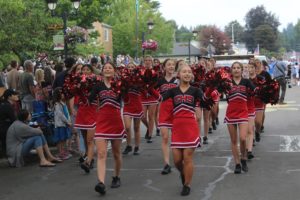The Camas School District will face a budget deficit of $8.2 million heading into the 2019-20 school year.
The deficit is a result of the state’s “McCleary Fix,” legislation meant to satisfy a state court ruling on funding public K-12 education in a case known as “McCleary” that increases school districts’ dollars received from the state while decreasing dollars received through local levies.
With a community that has been willing to approve local levies, Camas schools thrived under the previous state education model, which often relied on local levies to supplement the state’s education dollars.
As the district’s reputation grew, more and more families moved to the Camas area specifically because of the quality of the schools.
But now the district will have to find new ways to succeed.
“If we hadn’t shifted the model, we would be in a different situation today,” Camas School District’s superintendent, Jeff Snell, said last week. “It is (frustrating), but it’s also the nature of public schools. My hope is if we do this right, as we figure out the new system, we’ll be able to start enhancing in similar ways over time. But in the first couple years it’s hard to understand where those opportunities might be.”

